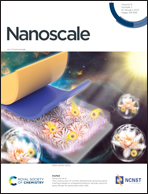Tuning the nanostructure and molecular orientation of high molecular weight diketopyrrolopyrrole-based polymers for high-performance field-effect transistors†
Abstract
As a versatile class of semiconductors, diketopyrrolopyrrole (DPP)-based conjugated polymers are well suited for applications of next-generation plastic electronics because of their excellent and tunable optoelectronic properties via a rational design of chemical structures. However, it remains a challenge to unravel and eventually influence the correlation between their solution-state aggregation and solid-state microstructure. In this contribution, the solution-state aggregation of high molecular weight PDPP3T is effectively enhanced by solvent selectivity, and a fibril-like nanostructure with short-range and long-range order is generated and tuned in thin films. The predominant role of solvent quality on polymer packing orientation is revealed, with an orientational transition from a face-on to an edge-on texture for the same PDPP3T. The resultant edge-on arranged films lead to a significant improvement in charge transport in transistors, and the field-effect hole mobility reaches 2.12 cm2 V−1 s−1 with a drain current on/off ratio of up to 108. Our findings offer a new strategy for enhancing the device performance of polymer electronic devices.

- This article is part of the themed collection: Nanoscale 2023 Emerging Investigators


 Please wait while we load your content...
Please wait while we load your content...